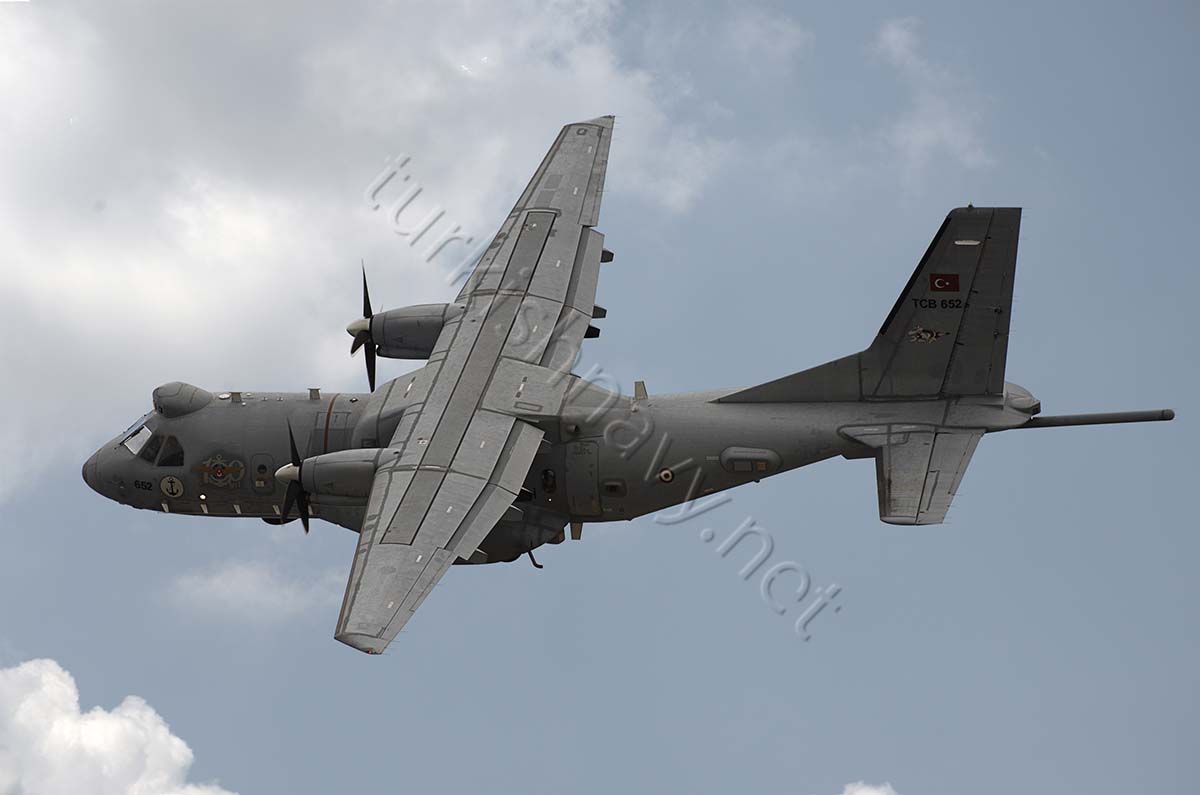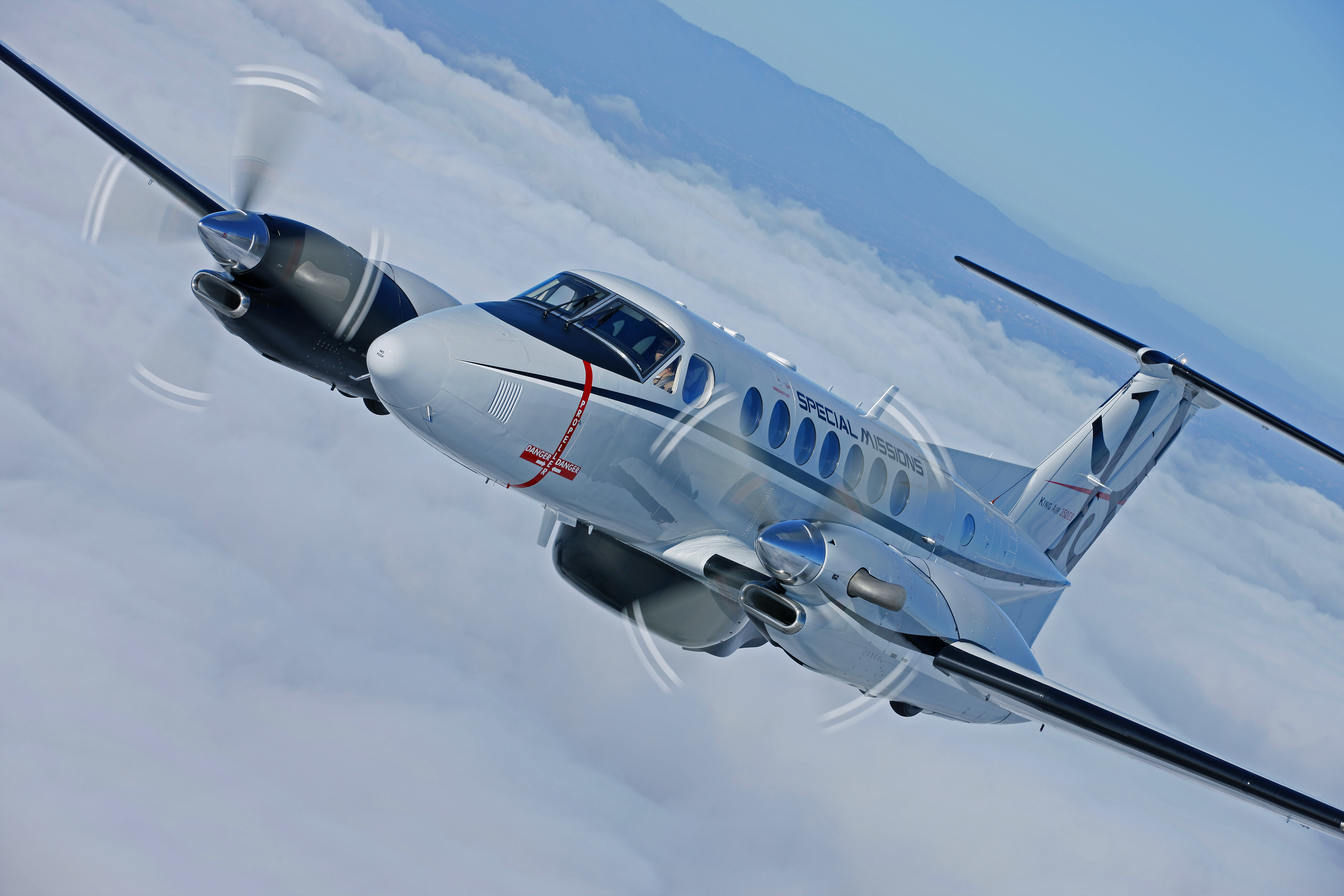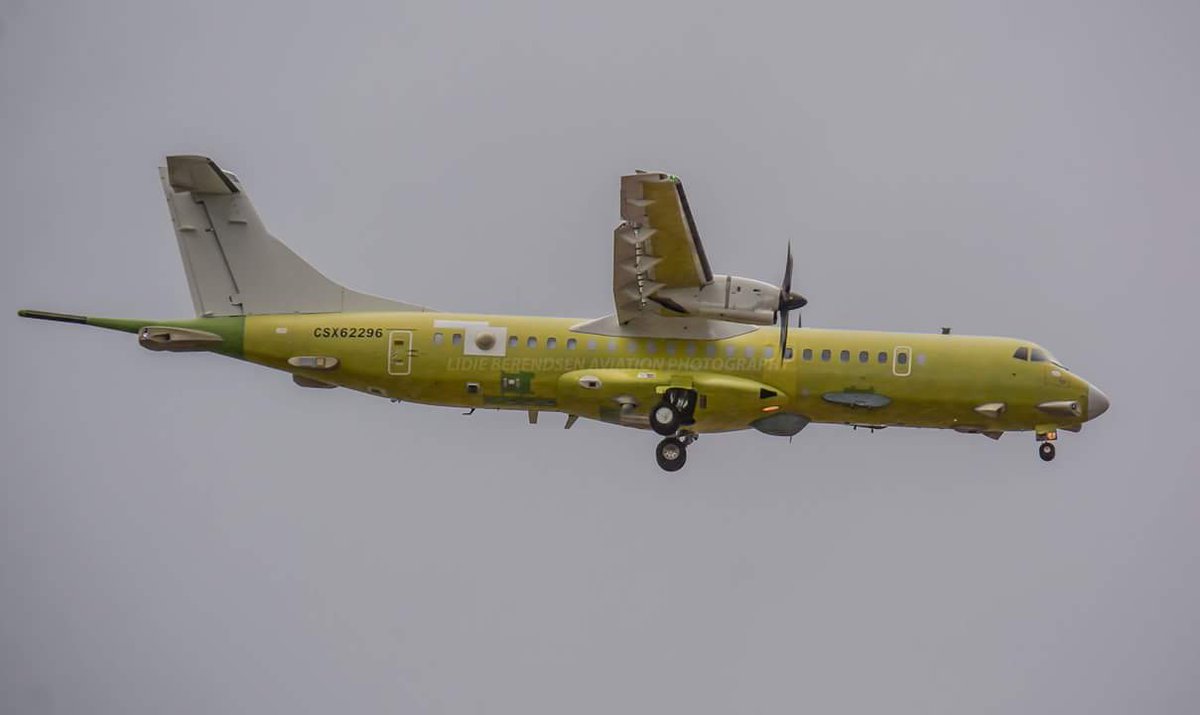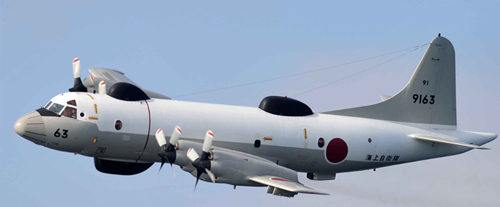Asw Aircraft - Beginning in 1987, 132 of the original batch of S-3As received equipment upgrades and modified weapons systems. With the end of the Cold War, these S-3B versions of the Viking shifted their focus away from anti-submarine warfare to use as surveillance and precision-targeting platforms armed with an array of modern weapons, including Harpoon and Maverick missiles and the AGM
-84 Standoff Land Attack Missile Extended Range (SLAM-ER) missile. In addition, with the retirement of the KA-6D Intruder it assumed the role as the carrier's primary overhead/mission tanker. The ATR 72 aircraft is powered by two PW 127M turboprop engines developed by Pratt & Whitney.
Asw Aircraft

Each engine driving a Hamilton Standard, six-bladed 568F propeller generates a power of 2,750shp at 1,200rpm. The power plant offers enhanced performance in hot and high conditions. In July 2012, Alenia Aermacchi and SSM signed an amendment agreement for the delivery of two ATR 72-600 TMUA (Turkish Maritime Utility Aircraft) and six ATR 72-600 TMPA (Turkish Maritime Patrol Aircraft).
Engine And Performance Of The Anti-Submarine Warfare Aircraft
The original contract was signed between the Turkish government and Alenia Aermacchi for the delivery of 10 ATR 72-500 anti-submarine warfare aircraft, which are now out of production. A maximum cruise speed of 510 km/h can be achieved by the aircraft, as well as a maximum range of 825 nmi.
It can climb at a rate of 1,355ft per minute and can remain airborne for about 11 hours. The basic ATR 72-600 aircraft has a maximum take-off weight of 22,800kg, maximum payload weight of 7,300kg and operational empty weight of 13,311kg.
It can carry a maximum fuel load of 5,000kg and can accommodate up to 70 passengers. MV-22s. The Marine Corps' MV-22s are ideal candidates for enabling expeditionary ASW from EABs. Tilt-rotor aircraft could revolutionize ASW. The ability to land and take-off from austere locations provides a significant tactical advantage, because these aircraft do not need vulnerable fixed runways like the P-8 (which requires a mile or more of paved runway to take off).
While Marines might sustain P-8s forward, the planes would be based primarily outside contested areas, which increases the P-8s' transit time to operational areas. The MV-22's faster speed, longer endurance, and midair refueling capability would make it a better ASW platform than the MH-60R Seahawk the Navy currently operates.
Cockpit And Avionics Suite
The ATR 72 ASW aircraft features a new glass cockpit and a mission system integrated with digital flight avionics. It's cockpit is fitted with five wide LCD screens, an Automatic Flight Control System (AFCS), FMS220 flight management system and a Multi-Purpose Computer (MPC).
The Commandant's message is clear: ASW should be considered a cross-domain mission supported by Marines. Marines can do so by supporting Navy forces at expeditionary advanced bases. P-8s and MH-60Rs could forward deploy, increasing their distribution and reach within the battlespace.

Marine logistics could sustain these aviation units with the fuel, lightweight torpedoes, and sonobuoys needed for the ASW fight.19 Surface ships could launch intelligence, surveillance, and reconnaissance UAVs, including loitering munitions, under strict emissions control for subsequent control handoff to Marines (
known as remote-split operations), thereby extending maritime domain awareness without compromising surface forces. Boats. Turning its focus toward the sea, the Marine Corps is considering acquiring a fleet of Metal Shark long-range unmanned surface vessels (LRUSVs).20 Despite the vessel's small size, the LRUSV could be fitted with conventional miniaturized ASW sensors such as thin-lined
Expeditionary Asw Marine Corps Style
, towed arrays (TLTAs) and hull-mounted sonars or deploy smaller unmanned systems. In fact, during 2016's Operation Unmanned Warrior, four wave gliders successfully tracked a submarine using a Krait-Array TLTA.21 Also, LRUSVs could employ the small, lightweight torpedoes known as compact rapid attack weapons (CRAWs), making them an effective pounce platform
for any Chinese submarines detected in their areas of operation. Capable of full autonomy, the vessels could be optionally manned with sailors and Marines to adjust the payload for the wide spectrum of ASW missions, including sensor deployment, target tracking, and target prosecution.
The joint force can address this ASW shortfall by using the Marines as extensions of the ASW bubble provided by DDGs and CGs. The Commandant of the Marine Corps has turned this former interservice heresy into something approaching doctrine. 18
The submarine threat to the U.S. Navy's sea control and power projection forces (aircraft carriers in particular) remain critical. Captain Wayne Hughes and Rear Admiral Robert P. Girrier's book, Fleet Tactics and Naval Operations, reminds us that 15 aircraft carriers were sunk by submarines in World War II, a tally that nearly equaled the tonnage of carriers sunk by aircraft.11 Argentine forces possessed
The Threat
the potential to derail the entire British Falklands campaign with a single submarine. What effects would 76 Chinese submarines have in a great power conflict? 12 The ATR 72 ASW has been selected by the Turkish Navy for maritime patrol and personnel / cargo transportation.
The Italian Navy meanwhile has acquired four ATR 72 aircraft offering maritime patrol capabilities, along with provisions for the ASW capabilities. ATR 72 MP, which is the maritime patrol variant, has been ordered by the Italian Air Force.

The LRUSV, however, is simply one option of many small craft available. The Coast Guard's modern fast response cutters would also make a good manned platform for an ASW suite. The Marine Corps could also procure manned patrol boats that would be good candidates for ASW missions.
Larger patrol boats would have advantages over LRUSVs in range and payload capacity. Thales AMASCOS (Airborne Maritime Situation & Control System) mission system and AIS (Automatic Identification System) will be fitted to the ATR72-600 TMPA. It will also feature a Link 11 / 16 data-link and broadband satellite systems.
Resistance To Change
This will be used for the transfer of data in real-time to the ground command and control centers, as well as other platforms, both in air and on sea. Current GMLRS rounds with CRAW-sized warheads already have almost triple the range of the existing ship-launched RUM-139 antisubmarine rockets (75 km vs. 28 km), but the CRAW/GMLRS advantage will soon increase.
The Army is investing to expand the GMLRS's range to 150 km and field the new Precision Strike Missile (PrSM), with a range of more than 500 km.25 Mobile batteries with anti-ship and antisubmarine weapons would allow Marines to target any enemy vessel
transiting critical chokepoints and littoral regions. The People's Liberation Army Navy (PLAN) continues to mature its diesel-electric and nuclear-powered submarine fleets, with a goal of at least parity with the West—or even becoming the premier submarine force of the world.
Analysts project that China's submarine fleet will numerically exceed the U.S. fleet by 2030, while its quality will continue to improve.6 In their authoritative book, Red Star Over the Pacific, Toshi Yoshihara and James Holmes warn of the increasingly large and capable Chinese submarine force:
Existing Capabilities
Asking the Marine Corps to fight submarines at sea—historically a blue-water Navy mission—will certainly be met with skepticism by traditionalists from both the Navy and Marine Corps. But if the Marine Corps wants to stay relevant, it has to be willing to change and challenge the historical divisions of labor among the Sea Services.
Even if the Marine Corps does pursue ASW, it will only be able to do so as a junior and supporting partner to the far better equipped Navy. Despite the Commandant's imprimatur, Marine Corps efforts to participate in ASW face resistance.

After General Berger published the Commandant's Planning Guidance outlining future changes to the Marine Corps, Jim Webb, a former Marine and Secretary of the Navy, forcefully argued that the Marine Corps should not optimize itself for the Pacific to support naval missions.
He wrote: The multi-mission S-3 Viking carrier-based anti-submarine warfare aircraft was the only jet aircraft operated in that mission for over 30 years. With a pilot and three sensor operators, it was known to fleet crews as the "Hoover," owing to the vacuum sound of its engines, and operated day and night from big-deck carriers to track Soviet submarines during the Cold War.
Armament And Countermeasures Of Atr Asw
This particular Viking carried President George W. Bush as a passenger in 2003 to the aircraft carrier Abraham Lincoln (CVN-72), and during that time was designated "Navy One." Cross-Domain Fires. Ground-based fires are another way Marines could help fight submarines.
The Marine Corps plans to increase its HiMARS missile artillery numbers by 300 percent and to develop a variant of the Joint Light Tactical Vehicle that can carry antiship missiles.24 Along the same lines, the Army has demonstrated and continues to develop capabilities for its rocket artillery.
. As a complement to these antisurface weapons, the Marine Corps could mate the CRAW with HiMARS-fired Guided Multiple Launch Rocket System (GMLRS) rounds to give its new littoral regiments a potent antisubmarine weapon. The Marine Corps could use these long-range rocket artillery batteries to prosecute detected submarines almost instantly.
The Falklands campaign revalidated Soviet Fleet Admiral Sergey Gorshkov's observation that antisubmarine warfare (ASW) requires large numbers of ships and aircraft to counter each enemy submarine. He noted the Allies deployed 25 ships and 100 aircraft for each German submarine they faced during World War II.4 While ASW technology has improved since the Falklands War, submarines have become stealthier, more widely proliferated, and better armed.
To The Shores Of Eabs
Today, ASW continues to demand disproportionate resources. 25. Jen Judson, “Army, Lockheed Prep for First Extended-Range Guided Rocket Test Firing,” Defense News, October 13, 2020; Kyle Rempfer and Joe Gould, “U.S. Army Completes Third Test of Lockheed's Precision Strike Missile,” Defense News, April 30, 2020.
At the height of the Cold War, the U.S. Navy had 227 operational P-3 Orion ASW aircraft, organized in three dozen squadrons around the world.13 The P-3 fleet dwindled, as first the "peace dividend" at the end of the Cold War and then the war on terror made hunting

submarines seem less relevant. The number declined to 137 by 2010. The last active-duty P-3 squadron retired its aircraft in 2019, and the follow-on P-8A is slowly ramping up. The Navy has set a requirement for 138 P-8As, but as of late 2019, only 111 were actually under contract.14 The Navy will supplement the P-8As with MQ-4C Triton unmanned aerial vehicles (UAVs), but these also will
be spread very thinly. After HMS Conqueror sent the Argentinian cruiser General Belgrano and 323 Argentine sailors to their final resting place on May 2, 1982, the remainder of Argentina's fleet retreated to home waters—all except the submarine San Luis.
Argentina hoped this lone diesel boat, marginally functional and half-crewed, could avenge the General Belgrano and turn the tide of the war by sinking a British aircraft carrier.1 A 2015 RAND Corporation study indicated that the opportunity for submarine attack against a U.S.
carrier strike group increased by an order of magnitude from 1996 to 2010 and projected the capability to increase by yet another order of magnitude by 2017.8 In 2018, Chinese President Xi Jinping personally addressed a new generation of submarine crews, saying:
But, despite a more challenging ASW environment, the U.S. Navy fields proportionally fewer dedicated ASW platforms than it did in World War II or the Cold War. Modern ASW tools have greater capability, but there are not enough to protect a global fleet against dozens of hostile submarines.
Consequently, scarce ASW platforms need to be optimally placed, well-protected, and well-supported to be effective. Marine Corps Commandant General David H. Berger has advocated in broad terms for Marines in expeditionary advanced bases (EABs) to support future ASW operations, writing: "The undersea fight will be so critical in the High North and the western Pacific that the Marine Corps
must be part of it.”5 There are multiple ways the Marines can make the Commandant's vision a reality. The ATR 72 ASW aircraft can be armed with anti-ship missiles and torpedoes to attack underwater threats during anti-ship missions.
Two pylons on either side of the fuselage can carry anti-submarine torpedoes. Also fitted are a sono-buoy launcher and an ASW weapon release point calculator. Even though the P-8A is very capable, it will end up being a high-demand, low-density asset.

The United States fields 291 MH-60R Seahawk helicopters, and while these "Romeos" provide important shipboard ASW capability for prosecution and point defense, they lack the range, payload, and on-station time of the Boeing 737-derived P-8s. In any global conflict, P-8s would be spread thin protecting U.S.
surface vessels. Even with 291 helicopters, it is not clear the Navy could meet the density of ASW assets (25 ASW helicopters) the Royal Navy deployed during the Falklands campaign without stripping protection from other regions.15
The aircraft's integrated self-protection system consists of search radar, chaff & flare dispenser, radar warning, depth charge, missile warning and laser warning systems. It also incorporates ESM (Electronic Support Measures) and MAD (Magnetic Anomaly Detector) sensors to identify and track threats.
Submarine forces are a key instrument of our nation and therefore must be given priority and make big strides in their development. . . . We pin our hopes on you to make rapid improvements in our Navy and its submarine forces. 9
The Turkish Undersecretariat for Defense Industries (Savunma Sanayii Müsteşarlığı (SSM)) released a tender in 2001 for the procurement of maritime patrol aircraft, featuring maritime surveillance capability and onboard mission equipment. These will be used by the Turkish Navy.
The Defense Industry Executive Committee (DIEC) signed a contract with Alenia Aermacchi for the Meltem III program in July 2005. Admiral Sandy Woodward, commander of the Royal Navy's task force during the Falklands War, keenly appreciated this threat: Losing either of his two carriers could lose the war for Britain.
In response, Woodward deployed 11 destroyers, 5 nuclear submarines, 1 diesel submarine, and 25 helicopters in the most intense submarine hunt in modern history, expending 6,847 flight hours and 50 lightweight torpedoes in a failed attempt to sink the San Luis.2 Still,
the submarine eventually made three ineffective attacks, including one against a British carrier, before withdrawing because of mechanical failures.3 After the centuries it took to establish the Marine Corps as a fully separate military service, it could reduce its present role by making it again subordinate to the funding and operational requirements of the Navy.26
The Marine Corps will not be directly involved with screening aircraft carriers or conducting deep-water ASW. But it could provide valuable capabilities in the littorals, and at key maritime chokepoints. The Marine Corps should develop multiuse capabilities that are compatible with the expeditionary advanced base operations concept for taking the fight to enemy submarines.
General Jeremy Moore, commander of the British ground forces during the Falklands War, said of the conflict, "Only land forces could win the war, but the Navy could always lose it."27 Alenia Aermacchi signed an agreement with Turkish Aerospace Industries (TAI) for modification of six ATR 72 aircraft into ATR 72-600 ASW TMPA configuration in mid-2012.
The six aircraft are being modified by TAI in Ankara, under the Meltem III program. The first ATR72-600 TMPA will be delivered in February 2017 and all the deliveries scheduled for completion by 2018.
anti submarine warfare asw, anti submarine plane, carrier asw aircraft, asw aircraft ww2, anti submarine aircraft, asw carrier, chinese asw aircraft, anti submarine aircraft active
0 Comments